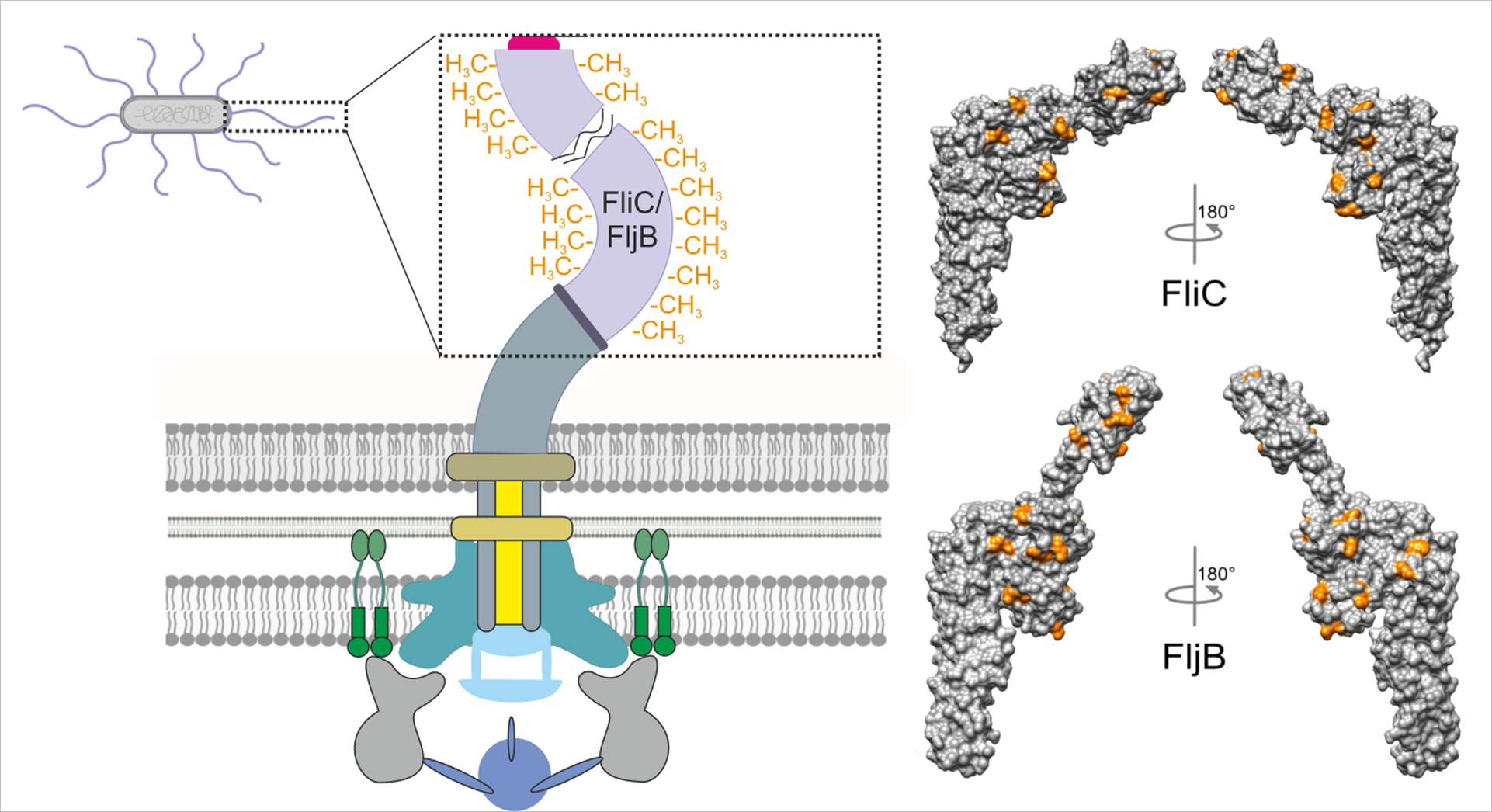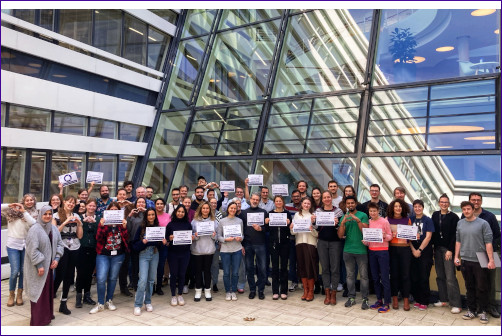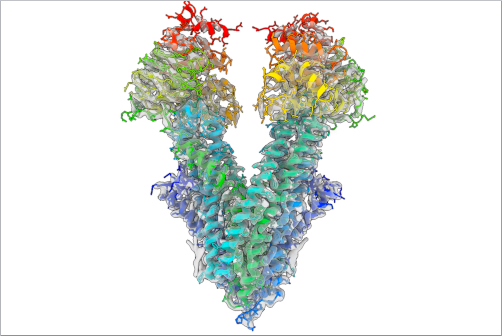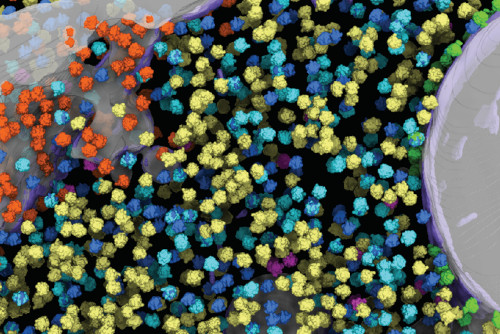Bacteria alter their surface to infect host cells
Several whip-like appendages, called the flagella, protrude from the body of bacteria such as Salmonella Typhimurium(Figure). It has long been understood that the flagella are responsible for bacterial motility which enables the directed movement of bacteria towards nutrients or an infection target site. In a recent publication in Nature Communications, the Kolbe group and collaborators have demonstrated that flagella also promote bacterial adhesion and host cell invasion.
The flagellums’ long, external filament is composed of several thousand copies of the same protein known as flagellin (Figure). The Gram-negative bacteria Salmonella Typhimurium express two distinct flagellins, FliC and FljB, which undergo the methylation of their lysine residues via the enzyme FliB. While this modification of the flagellin’s surface published in the 1950’s was the first reported protein methylation, the reason behind this process has until now remained elusive.

Based on both in vivo and in vitro studies, the Kolbe group and collaborators found that methylation of flagella facilitates adhesion of Salmonella Typhimurium to hydrophobic cell surfaces and thus plays an important role for the host invasion process. “The methylated lysine residues are conserved and primarily located in the surface-exposed domains of flagellins and in the mouse model, we were able to show that methylated flagella enhance the efficient colonization of the intestinal tissue,” explains Michele Lunelli, one of the publication's main authors “therefore demonstrating that methylated flagella are crucial for the progression of the infection.” Subsequent analysis showed that methylation, increases the surface hydrophobicity of flagella and therefore enhances adhesion to host cells. The crystal structure of FljB, presented in this paper, allowed the characterization of the methylation sites on the flagellar surface.
The modification of flagellin occurs not only in Salmonella but also in several other bacterial species. “This suggests that methylation of flagella might represent a general mechanism that facilitates adhesion to host cells for different bacterial pathogens,” explains Michael Kolbe “It’s quite exciting that this long-term collaboration has resulted in what may be a new role for the bacterial flagellar function.” This insight into flagella’s role in host cell invasion may ultimately provide scientists with a novel target to manipulate when developing new therapies to hider the infection process. More specifically, molecular insights into the structure of the flagellin subunits that assemble the flagellar filament could contribute to the design of specific inhibitors which, would prevent methylation and hamper host invasion.
Source:
Horstmann JA, Lunelli M, Cazzola H, Heidemann J,Kühne C, Steffen P, Szefs S, Rossi C, Lokareddy RK, Wang C, Lemaire L, Hughes KT,Uetrecht C, Schlüter H, Grassl GA, Stradal TEB, Rossez Y, Kolbe M, Erhardt M (2020) Methylation of Salmonella Typhimurium flagella promotes bacterial adhesion and host cell invasion. Nat Commun.



